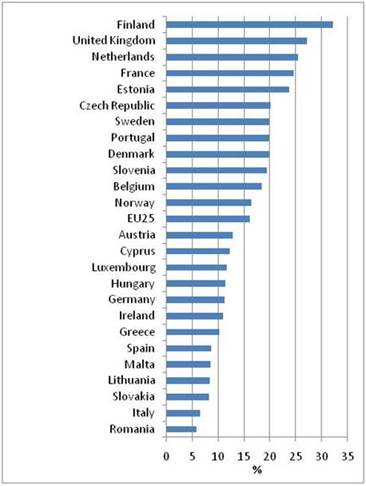Illness - a fact or an experience?
- Two types of information
- A factual question also requires interpretation and assessment
- "It just didn't occur to me"
- "It is not any real illness"
- Factual information – is it really available?
Koko dokumentti yhdell� sivulla
A factual question also requires interpretation and assessment
The module connected to the Labour Force Survey measuring health and work capacity inquires about the respondent's longstanding or chronic illnesses and other health problems. Eurostat has defined longstanding illnesses as follows: They refer to such illnesses or health problems which have lasted or are likely to last for at least 6 months or are episodic or otherwise recurrent. Health problems need not be diagnosed by a doctor, and mentioned should also be such illnesses and health problems that do not bother or whose symptoms are kept under control with medication.
Eurostat recommended asking about longstanding illnesses by going through a list of different illnesses with the respondent. In connection with a corresponding survey previously made in 2002, it was found that a simple yes/no question about whether the respondent had longstanding illnesses, does not produce comparable results between countries and reduces actual reporting of illnesses. A list of illnesses was thought to produce more exact and comparable results.
In questionnaire design the intention was to make the inquiry as short and simple as possible. The aim was to avoid using long and burdensome lists of illnesses for those respondents who do not report having any longstanding illnesses. In addition, it appeared from the previous survey that in Finland illnesses were rather over-reported than under-reported: then one third of Finns of working age said they had some longstanding illness (Figure 2). This is clearly more than in the other EU countries, which led us to consider whether the results told more about cultural differences in responding than about the generality of longstanding illnesses in different countries.
Figure 2. Share of working-age people (aged 16 to 64) having reported longstanding illnesses in 2002. Per cent.

Source: Results from the Labour Force Survey ad hoc module for the year 2002. Eurostat.
Before the decision about the eventual mode of asking it was necessary to know in what way responding changes when the mode of asking alters. Even if the question searches for information based on facts, the interviewees go through a set of different cognitive processes when answering that have an effect on responding. These are: 1) understanding and interpreting the question, 2) recall and assessment, 3) formulation of the response, and 4) actual responding (Ahola el al. 2002).
For this reason it was decided to use a comparative array, where the same interviewee was asked about illnesses in different ways and it was then compared how the responding changes. First, a so-called open question was asked (see Table 1, mode of asking 1), where first a yes/no answer was requested and after a yes answer, it was specified what kinds of illnesses or activity difficulties the respondent had. The intention was thus to exclude those respondents who do not have illnesses, and thus lighten the interview burden among those who are completely healthy.
When the whole questionnaire was tested for other questions as well, we returned to longstanding illnesses by means of the list of illnesses recommended by Eurostat (Table 1, mode of asking 2). The mode of asking was thought to influence particularly recalling of illnesses, but the interpretations of the question may also vary when the respondent gains more information about what type of information is being sought. In addition to this, different formulations were tested in the open questions, but the number of persons taking part in the pre-testing was so low that the material was not sufficient for studying differences in formulations.
Table 1. Tested modes of asking.
| Mode of asking 1: open question | Mode of asking 2: structured list |
| Next I will ask about your longstanding health problems. I mean by longstanding such illnesses or health problems that have lasted or will last for at least six months or are recurrent. It need not be diagnosed by a doctor. Please also consider health problems controlled with medication. Do you have any chronic illness or other longstanding health problem? 1) Yes, one 2) Yes, several 3) No illnesses. |
Do you have any of the following longstanding health problems: 01. Musculoskeletal disorder related to arms or hands? 02. Musculoskeletal disorder related to legs or feet? 03. Neck, shoulder or back disorder? 04. Heart or blood-vascular disease? 05. Diabetes? 06. Respiratory disease? 07. Cancer? 08. Internal organ or digestive system disease (liver, kidneys, pancreas, bowels)? 09. Migraine or other severe headache? 10. Skin disease? 11. Learning difficulty, such as dyslexia? 12. Epilepsy? 13. Depression? 14. Chronic anxiety? 15. Other mental problem? 16. Mental disability 17. Some progressive disease (e.g. MS, HIV, Alzheimer's disease, Parkinson's disease)? 18. Some other longstanding illness or health problem (thyroid problems)? |
| If response 1 or 2: Which illness or health problem do you have? |
Last updated 26.9.2011
